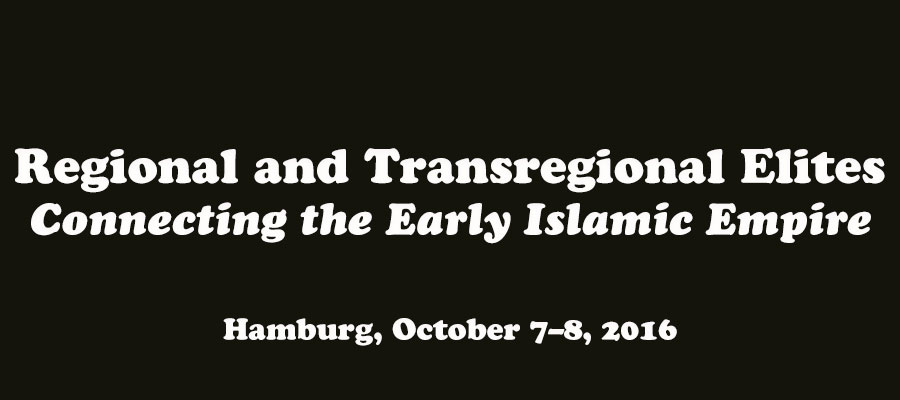Regional and Transregional Elites – Connecting the Early Islamic Empire, Hamburg, October 7–8, 2016
The ERC project “The Early Islamic Empire at Work – The View from the Regions Toward the Center” investigates how the vast Islamic empire, stretching from the Hindukush to the Atlantic and more diverse in terms of religion, language, and (if this is a valid concept at all) ethnicity than the Late Roman or Chinese Empire, was governed. It focuses specifically on the question of how its various regions were controlled and integrated into one of the most prosperous empires of the (late) antique world.
To integrate the regions of the early Islamic empire politically, to create an imperial idea and an imperial culture, elites of various backgrounds were essential. To fulfill their role, they had to commute and to communicate. The conference seeks to examine the roles that regional and transregional elites played in governing the vast early Islamic Empire (7th-10th century CE), with a particular emphasis on aspects of (social, institutional, spatial) mobility. The regional elites and their participation in governance and administration are essential for understanding the intricate workings of the early Islamic Empire. Similarly, the study of transregional elites, who projected imperial power but sought also to negotiate regional interests at the caliphal court, promises key insights into how the caliphal administration controlled and integrated diverse regions and populations whilst securing the interests of the empire at large.
The composition of the imperial elite, mostly expressing themselves in Arabic, changed over time, exhibiting both spatial and social mobility. While the conquering elite had a tribal background going back to the Arab Peninsula, this changed with manumitted slaves and the rise of the Persian-speaking elite under the ʿAbbāsids, as well as the substitution of the Arab and Persian military forces with Central Asian Sogdian and Turkish commanders and military. Nevertheless, moving elites were created not only by the military and the religious establishment, but also by investing landowners and networks of long-distance merchants. These various different elite segments created a shared taste in Arabic literature (adab), science and material culture.
The conference seeks to address a number of core issues about regional and transregional elites: who were the various elites in a region? How did these regional elites interact with the empire, and did they change in the course of interaction? What mechanisms and strategies did they develop? How and through which agents did they influence imperial decisions? How were transregional elites influenced by their interaction with regional elites, eventually becoming entrenched in the regions? How did they balance their relationships with regional elites, on the one hand, and central caliphal authorities on the other? How important was conversion to Islam for elite access? Where and how were transregional elites recruited? Was the shift from one imperial elite (Arab, Khurāsānian, Central Asian, and others) to another a sign of failure, or were some elites better at reproducing themselves? Which existing networks and emerging institutions helped elites to connect the empire and its diverse regions (tribal affiliations, family policies, mawālī, strategic appointments)?
The conference will be organized around three key themes:
- Conceptualization of regional and transregional elites from a comparative perspective
Definitions of elites, their origins, and their evolving identities - Transregional and imperial elites
Recruitment, function, networks, and reproduction of imperial elites (Arabs, Khurāsānians, Central Asians, non-Muslim elites, and others) - Regional elites
The interactions of converted regional elites and non-Muslim elites with the empire in (1) North Africa and Egypt, (2) the Arab Peninsula, Syria, the Jazīra, and Iraq, and (3) Iran and Greater Khurāsān
The conference will follow a workshop format, with a focus on discussion.
